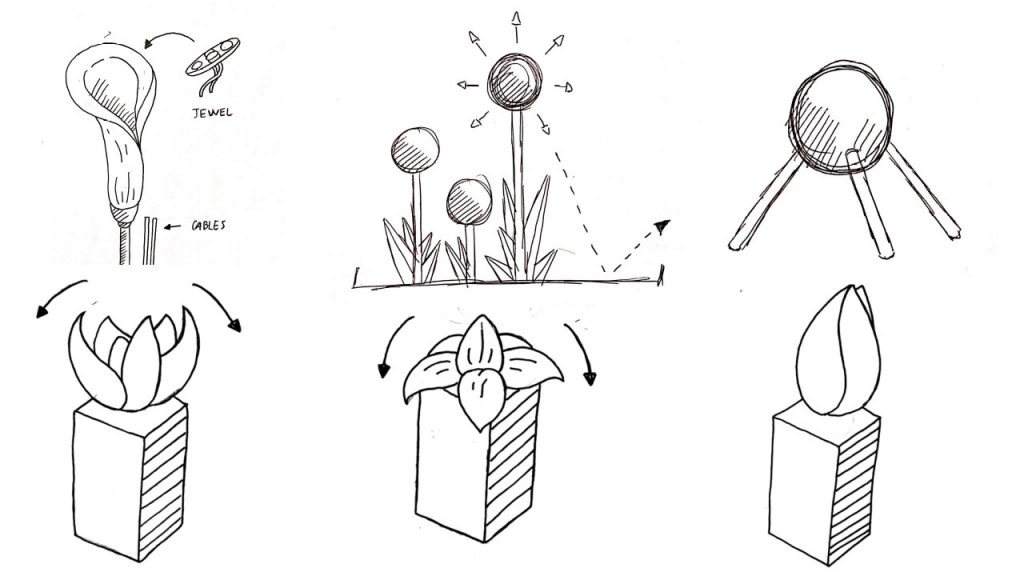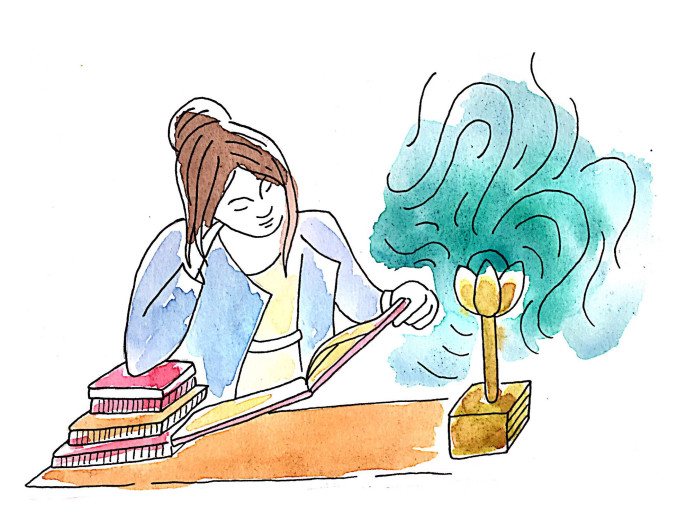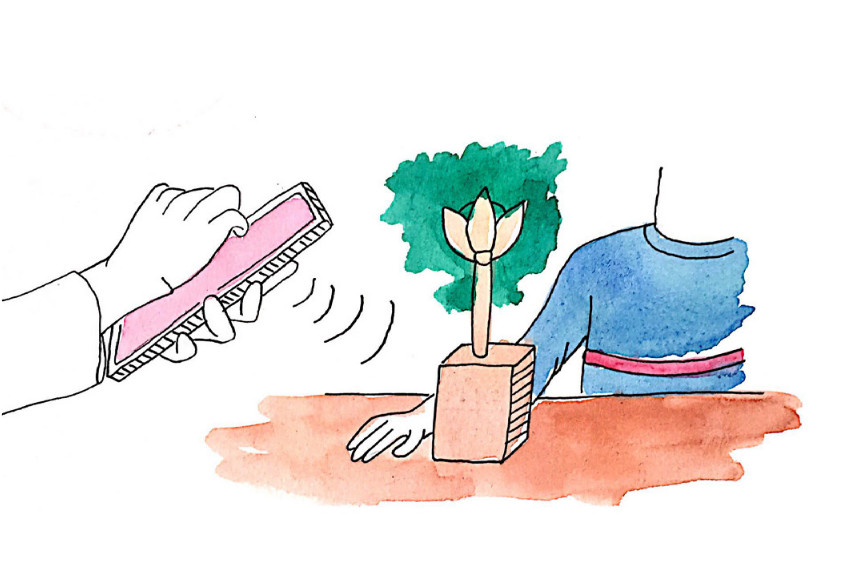Flower is a device specifically aimed at providing breathing exercises. Patterns with different paces and colors are shown on the petals, that users can sync with. The main use-case is to use it as a way to reduce anxiety, when users choose to take a break. It is also envisioned as ambient device operating in the peripheral vision, with the slow pulsating light gently guiding users, without intruding into their routine. While we envisioned various designs at the beginning of the project, before the name settled, in the end a “flower” as a form factor is reminiscent of a plant next to which one would breathe in in order to smell it.

When the Flower is connected to a smartwatch, the breathing guide adapts to users, speeding up slightly when heart rate is higher, slowing down when heart rate is lower. This is on par with existing literature around the physiological phenomenon of cardiac coherence (in a nutshell: heart rate variability synced with breathing). There is indeed not one breathing to rule them all, and users benefits from adapting the breathing guide to their taste and physiology in order to provide a more effective guide.


To this day tow studies took place. One occurred in a replica apartment in order to assess its usability and how people would appropriate the device. The second study assessed the effect of the device when stressors were presented to participants, collecting along the way subjective measures, performance metrics and markers extracted from heart rate variability. In the associated paper we describe how the design of the Flower was praised by users and how it can reduce symptoms of stress when users focus their attention on it, as well as increase performance on a cognitive task (N-back). We did attempt to investigate whether an ambient biofeedback could alleviate stress, however this other experimental condition did not yield any significant difference compared to a sham feedback — most probably because an ambient feedback take a longer than mere minutes before it could be effective.


At this stage a couple dozens devices are being used by various people, including therapists that integrated the device in their practice — more information about this version on the company’s website. Beside providing breathing exercice, a second usage that emerged from the field consists in using the Flower as a timer, to orchestrate the day for people suffering from disorientation. We are actively working toward a second iteration that would offer more interaction when it is being manipulated and that could be mass-produced. At the same time we are building a platform that could help stimulate interactions between users and that could be used to gather data for field studies. We are also considering use-cases where one Flower could serve as a biofeedback for a whole group, the color changing depending on the overall heart rate variability.
Associated publications
Morgane Hamon, Rémy Ramadour, Jérémy Frey. Exploring Biofeedback with a Tangible Interface Designed for Relaxation. PhyCS – International Conference on Physiological Computing Systems, Sep 2018, Seville, Spain. ⟨10.5220/0006961200540063⟩. ⟨hal-01861829⟩. PDF
Morgane Hamon, Rémy Ramadour, Jérémy Frey. Inner Flower: Design and Evaluation of a Tangible Biofeedback for Relaxation. Physiological Computing Systems, Springer, Cham, 2019. ⟨10.1007/978-3-030-27950-9_8⟩. PDF
